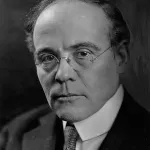My poem without me in it—would it be like
my room when I had returned to it
after my mother was done with me.
Under my bed, only the outer
space balls, of dust, only
the asteroids of hair, no bent-legs
spider drawstring purse, no fly, no
I. My poem without me in it, would it
be like her house before I was granted
the right to close my door—it had been one
hive, one queen five times my size, her
long stomach lolling like a tucker-bag.
My poem without me—like the mahogany
bookcase, with its spiral pillars,
without a book by a woman in it.
My poem without
a simile in it. My poem like my head, as a child, when I learned
how not to have
a thought in it,
in case it were a thought one would burn for.
My poem without this ordinary female
in it—like the body politic
of a teenage woman without her special
blood in it. This old girl's
poem without a girl in it.
I have been a child without a soul.
The poem is a vale of soul-making.
Imagining herself removed from her own poem, a poet realizes how poetry gives her the space to create herself.
- The speaker tries to imagine a poem “without her in it” by using similes (comparing one thing to another using a word such as “like”). Identify these similes. Which is the most surprising to you? Do you have a favourite?
- This poem comes from a collection titled Arias. In opera, an aria is an opportunity for a character to express their emotions. What emotions are expressed in this poem? Can you identify any shifts in emotion?
- Sharon Olds is famous for her raw, confessional poems that directly address difficult topics, including childhood trauma. What images are used to depict the relationship between the poet and the poet’s mother?
- The poet uses her own experience to reflect on the silencing of female writers. Where does the poem shift from the personal to the explicitly political?
- The title “My poem without me in it” is repeated as a refrain, with variations, throughout the poem. When reciting this poem, how might you vary the volume, speed, and tone of these lines to give the poem what Olds describes as “a certain sense of momentum”?
- The word ‘stanza’ comes from the Italian for room. This poem, one stanza, contains numerous images of enclosed spaces, both literal and metaphorical (room, house, hive, purse, head, body politic, etc.). Which of these spaces are freeing for the poet and which are constricting? Why might it be significant that the poem ends by comparing the poem to a ‘vale’, a term for valley, which is typically a low-lying place, partially bounded by hills or mountains but open to the sky?
- Write a poem about two places: one where you feel free and one where you feel silenced or restricted. These ‘places’ can be physical (bedroom, airport, grocery store, etc.) or they can be more abstract (Instagram, a word, etc.).
Read an interview with Sharon Olds in which she discusses writing honestly about family relationships and finding confidence as a writer: https://www.divedapper.com/interview/sharon-olds/
Sharon Olds, "My Poem Without Me in It" from Arias. Copyright © 2019 by Sharon Olds. Reprinted by permission of the publisher.
Source: Arias (Knopf, 2019)





